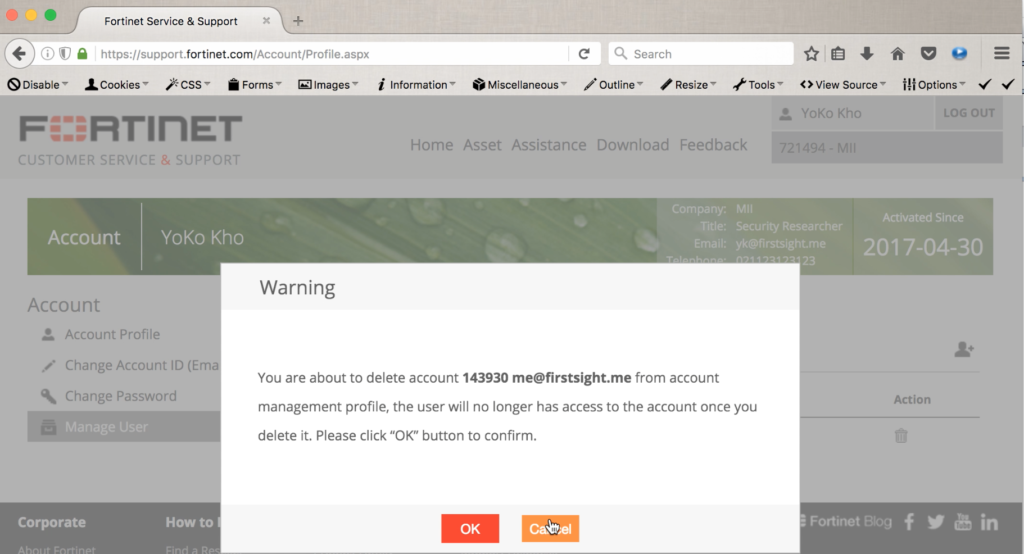
- #Fortinet support portal login how to#
- #Fortinet support portal login password#
- #Fortinet support portal login download#
- #Fortinet support portal login free#
Select Add user, then select Users and groups in the Add Assignment dialog. On the app's overview page, in the Manage section, select Users and groups. In the applications list, select FortiGate SSL VPN. In the Azure portal, select Enterprise applications, and then select All applications. In this section, you'll enable B.Simon to use Azure single sign-on by granting that user access to FortiGate SSL VPN. #Fortinet support portal login password#
In the User name box, enter For example, Select Show password, and then write down the value that's displayed in the Password box. In the User properties, complete these steps:. Select New user at the top of the screen. In the left pane of the Azure portal, select Azure Active Directory. In this section, you'll create a test user named B.Simon in the Azure portal. In the Set up FortiGate SSL VPN section, copy the appropriate URL or URLs, based on your requirements: #Fortinet support portal login download#
On the Set up Single Sign-On with SAML page, in the SAML Signing Certificate section, select the Download link next to Certificate (Base64) to download the certificate and save it on your computer: Under Advanced options, select the Customize the name of the group claim check box. For Source attribute, select erprincipalname. Next to User Attributes & Claims, select Edit.ĭ. The names of these claims must match the names used in the Perform FortiGate command-line configuration section of this tutorial. The claims required by FortiGate SSL VPN are shown in the following table. The following screenshot shows the list of default attributes. The FortiGate SSL VPN application expects SAML assertions in a specific format, which requires you to add custom attribute mappings to the configuration. You need to use the actual Sign on URL, Identifier, Reply URL, and Logout URL that is configured on the FortiGate. In the Logout URL box, enter a URL in the pattern In the Sign on URL box, enter a URL in the pattern In the Reply URL box, enter a URL in the pattern In the Identifier box, enter a URL in the pattern

On the Set up Single Sign-On with SAML page, enter the following values:Ī. On the Set up Single Sign-On with SAML page, select the Edit button for Basic SAML Configuration to edit the settings: On the Select a single sign-on method page, select SAML. In the Azure portal, on the FortiGate SSL VPN application integration page, in the Manage section, select single sign-on.
Test SSO to verify that the configuration works.įollow these steps to enable Azure AD SSO in the Azure portal:. Create a FortiGate SAML SSO user group as a counterpart to the Azure AD representation of the user. Configure FortiGate SSL VPN SSO on the application side. Grant access to the test user to enable Azure AD single sign-on for that user.  Create an Azure AD test user to test Azure AD single sign-on. Configure Azure AD SSO to enable the feature for your users. To configure and test Azure AD SSO with FortiGate SSL VPN, you'll complete these high-level steps: For SSO to work, you need to establish a link relationship between an Azure AD user and the corresponding SAML SSO user group in FortiGate SSL VPN.
Create an Azure AD test user to test Azure AD single sign-on. Configure Azure AD SSO to enable the feature for your users. To configure and test Azure AD SSO with FortiGate SSL VPN, you'll complete these high-level steps: For SSO to work, you need to establish a link relationship between an Azure AD user and the corresponding SAML SSO user group in FortiGate SSL VPN. 
You'll configure and test Azure AD SSO with FortiGate SSL VPN by using a test user named B.Simon. Wait a few seconds while the app is added to your tenant.Ĭonfigure and test Azure AD SSO for FortiGate SSL VPN
Select FortiGate SSL VPN in the results panel and then add the app. In the Add from the gallery section, enter FortiGate SSL VPN in the search box. To add an application, select New application. Go to Enterprise applications and then select All Applications. In the left pane, select Azure Active Directory. Sign in to the Azure portal with a work or school account or with a personal Microsoft account. To configure the integration of FortiGate SSL VPN into Azure AD, you need to add FortiGate SSL VPN from the gallery to your list of managed SaaS apps: In this tutorial, you'll configure and test Azure AD SSO in a test environment.įortiGate SSL VPN supports SP-initiated SSO. A FortiGate SSL VPN with single sign-on (SSO) enabled. #Fortinet support portal login free#
If you don't have a subscription, you can get a free account.

To get started, you need the following items:
Manage your accounts in one central location: the Azure portal. Enable your users to be automatically signed in to FortiGate SSL VPN with their Azure AD accounts. Use Azure AD to control who can access FortiGate SSL VPN. When you integrate FortiGate SSL VPN with Azure AD, you can: #Fortinet support portal login how to#
In this tutorial, you'll learn how to integrate FortiGate SSL VPN with Azure Active Directory (Azure AD).








 0 kommentar(er)
0 kommentar(er)
